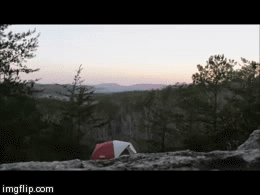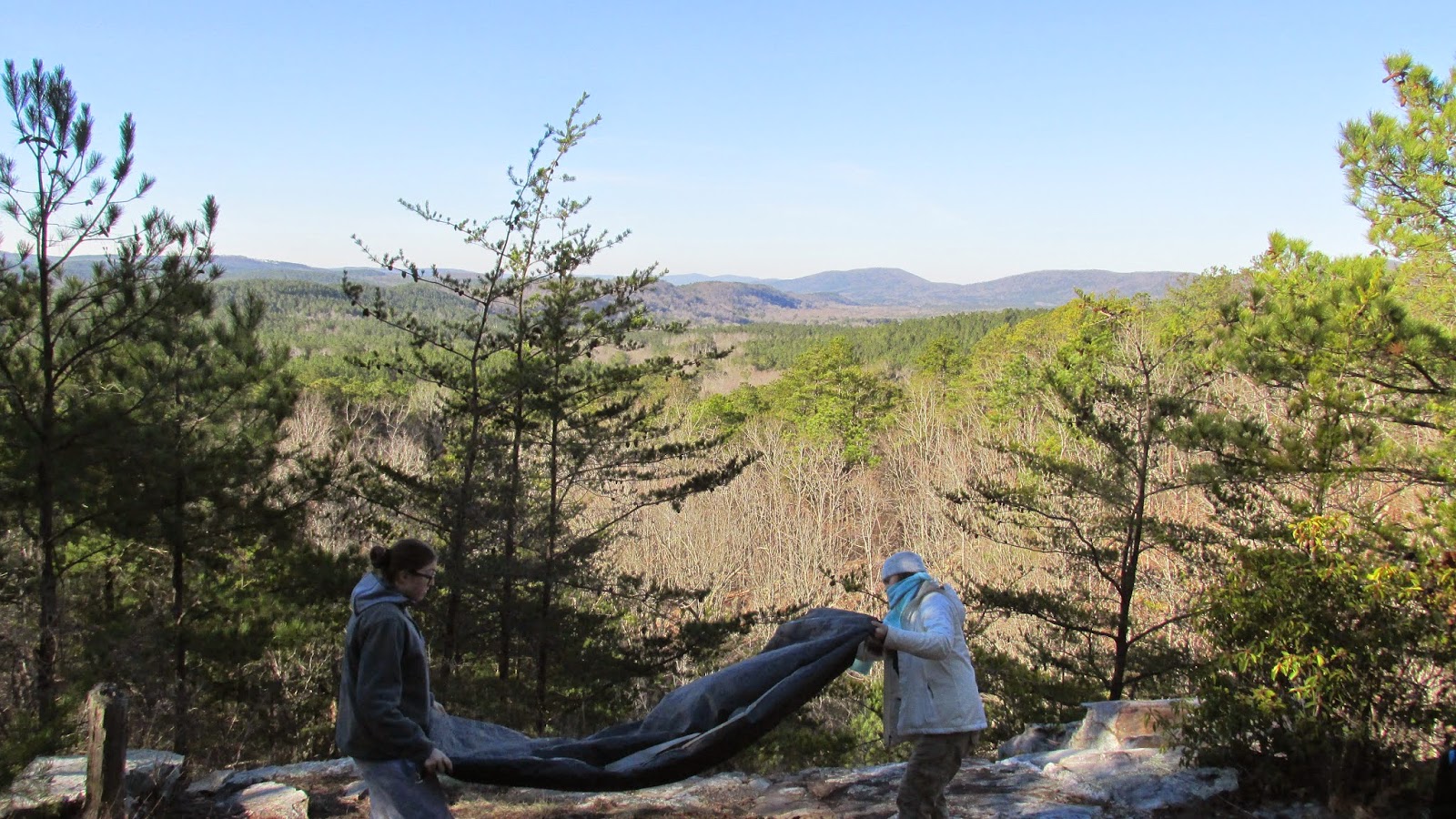
From the top left corner:
1.) Sawyer Mini Squeeze filter and accessories- I chose the sawyer water filter for two main reasons, price and reliability. Price is a major aspect in all of my gear, because I am not a professional backpacker and I need money for things like bills. The Sawyer Mini is about $15 dollars, and doesn't have many mechanical parts. Many people swear by the Katadyn Filter, but I just don't like having to trust a mechanical device for water purification. I'm sure it's fine, but between that and the high price I just could not justify it. I carry two bags and the syringe to backwash it if necessary. I also have a bottle of Iodine tablets for purifying larger volumes of water, such as the whole camelback at one time, and as a backup. I like being able to field maintain tools, even with the weight increase. Always be prepared.
2.) Browning BDA .380 - Next going down is my sidearm. The main reason for carrying this is that it is my only suitable handgun. I would rather have a full size Glock 20 in 10mm, or at least a full 9mm for hiking. That being said, the BDA is lightish, reliable, and accurate. It is a good EDC gun if you are okay with the .380. It feels great in my hand and points straight for me.
3.) Zippo 4-in-1 Woodsman axe- Going down again, this tool has many functions. Multi-function is important for weight reductions. This tool is an axe, a bow saw, a mallet, and a stake puller all in one. Is it necessary? Probably not. Is it nice? Yes. It is extra weight, but I am okay with that. It makes gathering firewood easier when you can saw fallen trees into usable logs. Expedition Portal reviewed this tool favorably, and I got it from Santa not long later. It is pretty nice.
4.) Ka-Bar Becker Campanion Knife- It is a heavy, large knife that does everything a knife is supposed to. The full tang and thick blade make it very tough and it can be used as a wedge to split wood among many other things. Heavy, but perfect for me.
5.) Cookware- Back at the top of the next row- All steel. This is a price thing as well. I would prefer a lighter, plastic mess-kit, but I already had the metal one. It is helpful at times to be able to cook on it. The Stanley pot does need to be metal, and is used with #6 to boil water.
6.) MSR pocketrocket- Inside the cookpot, is cheap, light, and simple. Boils fast and burns Butane canisters with some efficiency.
7.) Firestarting- Matches, and lots of 'em. I use the flint and steel whenever I can, because it feels more rustic or something. I also carry some of those wetfire tinder cubes, to help start fires when it is damp. The Gerber Bear Grills flint and steel is, surprisingly, not just a marketing gimmick. The large size makes it easy to grip and locate in a pack, and the shower of sparks is large and effectively hot.
8.) Navigation- Maps,Compass, and GPS- I carry large and small scale maps, the smaller scale with detailed topo-lines. Many people say that using a hiking GPS defies the point of hiking. I disagree with this, I find that the information contained in the GPS is very useful and improves my experience. I have the Garmin Etrex 20, and I have downloaded Ala-topo and the Alabama trails maps onto it. These maps have vast amounts of information contained in them. The trip computer tells you how far you've gone, your current and average speed, altitude, and many other things. I find this convenient.
9.) First Aid Kit and SOI survival kit - Kit from Dicks- contains most of the basics, I added an Ace bandage roll for sprains and splints. I do not have any formal first aid training, which I feel is a deficit in my education that I plan to remedy at some point. Survival Kit has basic survival stuff, firestarting, fishing, shelter. Carry in pocket in case I'm separated from my bag. Lacking in many regards, but better than nothing.
10.) Paracord and Duct Tape- Immensely useful items.
11.) Shelter and Insulation - Eno Hammock and underquilt, KOPPEN 20 sleeping bag, Warbonnet Bug net, Hennessy Hex Fly rain. For comment on later. Is versatile enough to be used as a tarp shelter if needed, though a good backpacking tent is preferred if the hammock is in some way unsuitable for the environment.
12.) Backpack - Kelty Redcloud 90 - At 90 liters, this is a very big pack. I prefer it this way. I like durability, redundancy, and being prepared more than being ultra-light. Weight is still a major thought, but a broken light tool is worse than a heavy working one. Not that there is anything wrong with ultralight backpacking, it just isn't my thing. This pack has an internal aluminum frame, and the Cloudlock suspension, which makes it very comfortable even with heavy loads and long distances. I also really like having pockets to keep everything organized, another way I differ from many internet reviewers.
Items that differ depending on the trip include clothes and food. Winter requires more of both.
Always do research before going out. This isn't an exhaustive list, nor is it all you'd need to be ready for any situation.





















